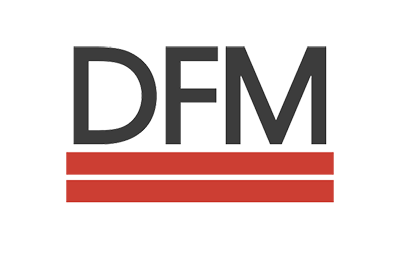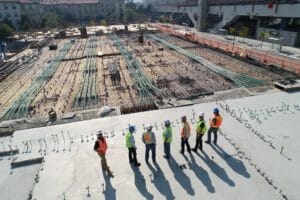Planning is essential for wet and dry utilities. The former includes sanitary sewer systems, water supplies, and storm drains, while the latter incorporates natural gas systems, electricity lines, fiber and telecom installations.
As you might expect, wet utility planning differs from dry utility planning across several dimensions. Therefore, it is critical to approach your site’s development correctly, whether working independently or with utility designers and coordinators.
This post first explains the differences between wet and dry utilities. Then, we explore the specific considerations for wet and dry utility planning and why it is essential.
Defining Wet And Dry Utilities
It is traditional to use the terms “wet” and “dry” to describe utilities in the construction and civil engineering sectors. As the name suggests, wet utilities include anything water-related that transports liquids in and out of buildings, including main supplies, wastewater, and sewage.
Dry utilities refer to anything that doesn’t include water. Telecom lines, natural gas piping, and electrical systems fall into this category.
The presence of water materially changes how construction teams must handle utilities. Proper planning reduces the risk of conflicts and ensures utilities work as intended.
Differences Between Wet And Dry Utility Planning
Wet and dry utility planning varies across multiple dimensions.
- Complexity. Wet planning is often considered more complex than dry planning because of various complicating factors. These include the need to accommodate soil and groundwater conditions, consider the site’s drainage patterns, and identify existing lines’ locations through surveys.
- More expensive. The complexities of wet utilities increase the cost of this planning type. Environmental permitting may be more stringent, and safe installation may require specialized equipment and personnel.
- Timeline. Wet utility planning takes longer to complete than dry planning in most cases. Complex site assessments, regulatory compliance, and design considerations can significantly slow the process.
- Stakeholder coordination. Wet utility planning may require more coordination between various stakeholders. Contractors must liaise with landowners, the general public, environmental regulators, and utility providers to complete successful installations.
Wet Utility Planning Process
Wet utility planning typically follows a sequential process to ensure the successful installation of new systems. Here’s what happens:
1. Site assessment
The process begins with planners assessing the site, including existing utility lines and their locations. Professionals also consider how new systems might impact the local environment.
2. Design
The next step involves designing the wet utility system, including drawing detailed maps and plans showing its specifications. Delineations indicate where the new lines will go and how they connect to existing systems.
3. Monitoring
The final step is installation monitoring. Planners must verify contractors are building the lines to meet the design’s specifications and requirements. Inspectors may test systems regularly to ensure they are functioning correctly.
Dry Utility Planning Process
Dry utility planning is quite similar to the wet utility process. However, because of its reduced complexity, it is often considered a more manageable approach.
1. Site Evaluation
Contractors begin with an initial evaluation of the project site to determine the location of any existing utility infrastructure using utility mapping equipment.
2. Dry Utility Design
Then, developers design the new systems while obtaining various permits and approvals.
3. Dry Utility Coordination
Next comes the disconnection or relocation of existing dry utilities and the installation of new systems. Contractors and dry utility coordinators usually work directly with utility providers at this point to ensure they avoid damaging existing infrastructure and that all installations adhere to provider specifications.
Why Is Utility Planning Essential For Site Development?
Wet or dry, utility planning is essential for site development for numerous reasons.
Reduce The Risk Of Delays and Cost Overruns
Utility planning is essential for site development because it reduces the risk of delays and cost overruns. Proper coordination with utility providers, combined with detailed site assessments early in the development process, can uncover significant issues that could cause massive delays in the future.
Improves Development Efficiency
Utility planning can also improve development efficiency by enabling contractors to get more done in less time. A sound understanding of the site facilitates the intelligent placement of new lines while ensuring other services remain intact.
Environmental Protection
The protection of the environment is another benefit of proper utility planning. Knowing where existing lines lie reduces the risk of damage that causes leaks while speeding up the installation process, minimizing impact on sensitive habitats and areas vulnerable to pollution.
Improved Safety
Lastly, effective utility planning improves safety. When on-site personnel know where utilities lie, they can protect themselves and fellow workers from harm.
Utility Planning From Experienced Professionals
DFM is the DC metro region’s premier dry utility design and coordination consultants. We help facilitate new utility services and upgrades for existing developments. We design, engineer, coordinate, and manage the process with electric, gas, cable, telecom companies, and internet service providers, so you don’t have to. Contact us today for more information.
For wet utility planning and installation, trust our sister company, Muller, Inc. Muller has more than 17 years of experience in Maryland, Virginia, and Washington, DC. Contact them today for more information.




